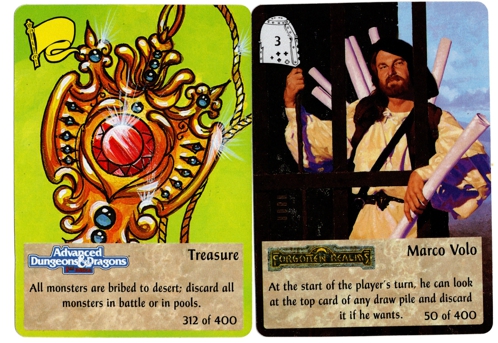I played a few hands before it was released, and knew it was going to fail. The other players knew it was going to fail, too. The gameplay was uninspired and derivative (although at least it didn't rip off M:tG's) and it was unbalanced. One particular card, I think it was Menzoberranzan, was pretty well "I win" in the late game; fortunately, this was changed before real players got their hands on it.
The imbalance might not have mattered too much, any more than the assorted spelling mistakes on the cards mattered in the long run: they were problems that could be fixed. What really stopped the pick-up was the artwork. TSR figured that because they already had hundreds of pieces of artwork available from games, books and magazines, they could create cards quickly and nimbly. That was correct, they could, but it turned out to be counter-productive.
The first problem was that the players wanted new artwork, not old favourites.
The second problem was that the artwork was selected with little regard to consistency of style. Here are a couple of example cards from the ones in my collection that I didn't sell while I could:

All in the "Marco Volo" style would have been excellent. All in the "Treasure" style would have been a bit of a letdown but still serviceable. Using both styles only served to highlight how cheap some of the images were, though, because they were alongside better artwork against which they could be compared.
If the gameplay had been strong, the artwork wouldn't have mattered. It wasn't, though, so it did.
Other games brought out on M:tG's tailcoats had both good art and good gameplay, but they didn't have the name recognition so couldn't achieve traction. Overall, TSR had its chance and blew it. Eventually, it was bought out by its upstart rival, M:tG's publisher Wizards of the Coast.
I'm looking for things to put in the display cabinet we're going to have in the new games lab we're setting up for our students at the university. Maybe I'll pop some Spellfire cards in there so they can see how the mighty can fall.